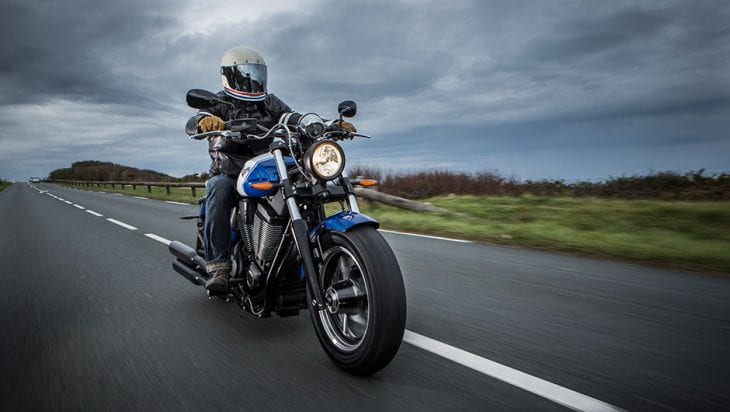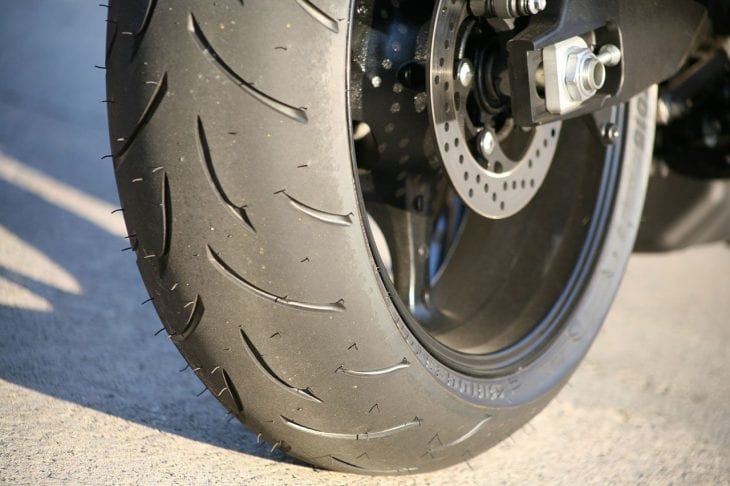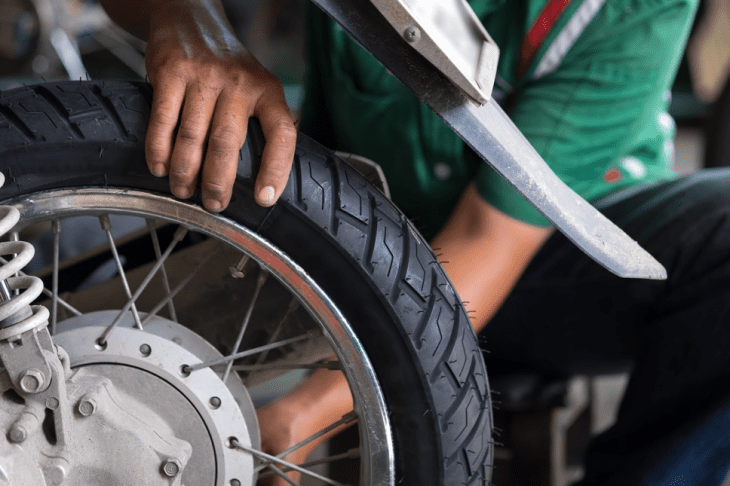You need tires for your bike, and getting them online yourself can be a great way to save some money: but only if you know what you’re doing. You need to know some specifics about motorcycle tires in order to make the right choice for your ride.
Choosing a tire
Tire type: Your first step is to choose a general type of tire. There is room here for personal preference to a degree, but if you’re a relative beginner, it’s usually best to go with the manufacturer’s recommendations and then experiment from there.
Cruiser tires strike a balance between street performance and long road trips. Street tires are designed to give you enough grip to move around city curves at high speeds. ADV, dual-sport, and dirt tires are all designed for off-road use (to varying degrees).

Source: Adrenaline Motorsports Toys
Tire brand: There are great tire names out there. Michelin motorcycle tires are always a good choice, as are Dunlop, Bridgestone, Continental, and Pirelli. There are other quality tires aimed at particular riding types, like those from Track & Trail.
You want to be careful with cheaper tires from unknown manufacturers, or those made in countries where quality control is questionable. In particular, be careful of tires made in China, many of which are currently under investigation or recall. There are also a number of product lawsuits in play regarding these tires.
Tire size: The current industry standard for tire information is the metric system, although you might run into some non-radial tires that use the older alphanumeric system. The metric system consists of a three digit number, a two-digit number, a rim measurement, a load rating, and a speed rating.
The three-digit number tells you the width of the tire. The two-digit number expresses the height of the tire. The next item is the speed rating, expressed as a letter from J-Z. Next comes a number that tells you the diameter of the tire rim in inches. Finally, look for a number between 20 and 89, which expresses the load rating.
To understand the size you need, you’ll first need to check your motorcycle manufacturer’s recommendations. This is especially important when it comes to the speed and load ratings. Then look at the available tire types and ask your seller about what they recommend.

Source: ThoughtCo
Tire care and maintenance
If you don’t know, go with OEM: You can always experiment with tires once you feel confident and really know your bike, but if you aren’t sure what size or style to use, get the same ones the manufacturer originally put on your bike.
Break in your tires carefully: Your tires need some gentle treatment for the first 100 miles or so. Bear in mind that you should do this in dry conditions, not wet weather. You also need to vary your speed and where you ride. Don’t ride the whole 100 miles on a highway and be sure to take some good curves both left and right to break in the sides of the tires.
Inflate your tires correctly: The right pressure in your tires will keep you safe, give you the best fuel economy, and put the least wear and tear on your bike and the tires. Over-inflation is just as bad as under-inflation, but do add a little extra pressure to the back tire when you’re taking a passenger or a heavy load.
Don’t leave the bike on its tires: If you only ride occasionally, get a stand to put your motorcycle on. If the bike sits on one part of the tire for extended periods, the tire will develop flat spots.
Your tires can make all the difference to how much you enjoy your ride. This isn’t a place where it’s safe to skimp, so always invest in the best quality you can afford.

Source: Motorcyclist
